#An Unfinished Woman: A Memoir
Explore tagged Tumblr posts
Text
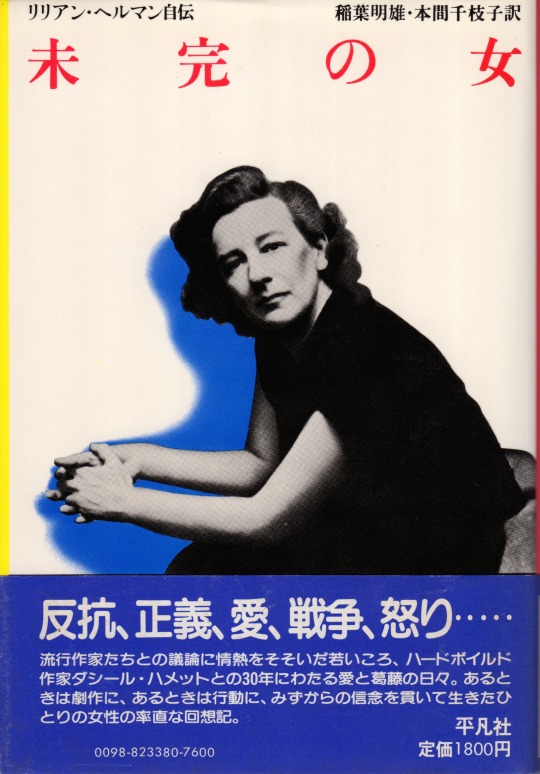
未完の女 リリアン・ヘルマン自伝 L・ヘルマン、稲葉明雄・本間千枝子=訳 平凡社 装幀=山口はるみ
#未完の女 リリアン・ヘルマン自伝#未完の女#Lillian Hellman#An Unfinished Woman: A Memoir#L・ヘルマン#リリアン・ヘルマン#稲葉明雄#本間千枝子#harumi yamaguchi#山口はるみ#anamon#古本屋あなもん#あなもん#book cover
13 notes
·
View notes
Text
svt & love poems they'd give you.

★ footnotes: decided to marry the two halves of my heart this valentine's: svt and poetry. this is unashamedly inspired by the brilliant @heartepub, whose constant intersection of svt x poetry inspires me to no end. viv, you are an entire poem in itself; i would give you all the pretty words in the world, if i could. + happy carat day, everyone!


seungcheol ★ Isn't Every Love Poem an Unfinished Love Poem?, Cristin O'Keefe Aptowicz
Praise the caps of your shoulders, my lips pressed against them.
Praise the poem I was trying to finish when you showed up
at my door.

jeonghan ★ If I Had Three Lives, Sarah Russell
If I had three lives, I'd marry you in two. The other? Perhaps that life over there at Starbucks, sitting alone, writing—a memoir, maybe a novel or this poem. […] I'd walk the beach at sunrise, find perfect shell spirals and study pockmarks water makes in sand. And I'd wonder sometimes if I'd ever find you.

joshua ★ True Love, Sharon Olds
I quietly call to you and you come and hold my hand and I say I cannot see beyond it. I cannot see beyond it.

junhui ★ February & my love is in another state, José Olivarez
stay with me. while the sky is still golden, hold the ladder so i can climb, & from the highest rung, i can scrape away a drizzle of light to wear around my neck. alone
is the star i follow. in love & in solitude: alone is the home with the warmest glow.

soonyoung ★ Variations on the Word Love, Margaret Atwood
This word is far too short for us, it has only four letters, too sparse to fill those deep bare vacuums between the stars that press on us with their deafness. It's not love we don't wish to fall into, but that fear. this word is not enough but it will have to do.

wonwoo ★ The Leash, Ada Limón
But sometimes, I swear I hear it, the wound closing like a rusted-over garage door, and I can still move my living limbs into the world without too much pain, can still marvel at how the dog runs straight toward the pickup trucks break-necking down the road, because she thinks she loves them, because she’s sure, without a doubt, that the loud roaring things will love her back,

jihoon ★ You Do Not Have To Love Me, Leonard Cohen
I wrote all these songs for you I burned red and black candles shaped like a man and a woman I married the smoke of two pyramids of sandalwood I prayed for you I prayed that you would love me and that you would not love me

seokmin ★ Watching you talk on the phone, I consider the empty space around atoms–, Rhiannon McGavin
To make my birthday cake from scratch, you wouldn’t just plant strawberries: you’d create another universe. I wanted you
warm and close as fresh laundry and here we are, Tuesday. Of course you love me, you’re wearing one of my socks.

mingyu ★ O Small Sad Ecstasy of Love, Anne Carson
I did a road trip all over my mind and heart and there you were kneeling by the roadside with your little toolkit fixing something.
Give me a world, you have taken the world I was.

minghao ★ The Quiet World, Jeffrey McDaniel
Late at night, I call my long distance lover, proudly say I only used fifty-nine today. I saved the rest for you.
When she doesn’t respond, I know she’s used up all her words, so I slowly whisper I love you thirty-two and a third times.

seungkwan ★ A Walk Round the Park, Sandra Lim
We did not say much to each other but
we grinned, because this love was so good you sucked the
rib bones
and I licked my fingers like a cat.
Now I’m omniscient. I’m going to skip past
the hard
parts that go on for a very long time.

vernon ★ Guilty of Dust, Frank Bidart
the voice in my head said
LOVE IS THE DISTANCE BETWEEN YOU AND WHAT YOU LOVE
WHAT YOU LOVE IS YOUR FATE

chan ★ First Date, Megan Williams
I want the warmth of your gaze to convince me that living is worth the discomfort. That other people can like me. That the bottlenecked bridge full of squealing tires & suckers who can't merge is a small price to pay for a hand in mine.
#svt imagines#svt scenarios#seventeen imagines#seventeen scenarios#once again: not much to tag since this is my personal little love letter for the boys 💌#poetry x svt circles how i love u so!!!#(🥡) notebook#(💎) page: svt
43 notes
·
View notes
Note
Hi!
I really enjoy your posts about d'Eon; she's so fascinating. I'm definitely not an expert on her, but I'm very interested! One article I read said that, in her unfinished memoirs, she used both male and female pronouns. Is this a) even true, given some of the clearly wrong historical writing you've cited before, and b) if it is true, what do you think about it?
So I don't speak French. D'Eon's unfinished memoirs were originally written in French and I'm working with an English translation. This makes any discussion of gendered language in her memoirs a bit more difficult as there are words that are gendered in French but gender neutral in English and vice versa. Helpfully the translation by Roland A. Champagne, Nina Ekstein and Gary Kates notes when the masculine or feminine form is being used. However I'm still answering this question based on a translation not d'Eon's original words.
D'Eon's memoirs are written in first person so the majority of the pronouns she uses for herself are first person pronouns (I, me, my, mine).
Other characters use either he/him or she/her pronouns for d'Eon but this reflects that characters perspective not d'Eon's personal pronouns. For example in a scene set in Russia the Comte de Vorontsov confronts d'Eon about her double life, using feminine pronouns for Mademoiselle d'Eon and masculine pronouns for Captain d'Eon:
This young lady remarked to Madame Vorontsov and to my niece the Princess Asthoff that she remembers very well that Mademoiselle d'Eon has a small wine-colored birthmark on her left cheek near her ear, that at the convent in Meaux she wore gold-drop earrings, and that if Captain d'Eon has this wine-colored birthmark on his left cheek and that if he has pierced ears, you can be sure that this is the Demoiselle d'Eon whom I knew in the convent. (p20)
D'Eon pretty consistently seems to use feminine language for herself when speaking in the present tense. She uses the words "woman", "girl", "maiden", "daughter", the titles "mademoiselle" and "chevalière" and "she/her" pronouns at points when she slips into third person.
However when talking in the past tense she sometimes describes herself in the masculine. She was a "man" but is now a "woman". She will sometime talk about her past self in third person referring to "him" as her "brother". After Mademoiselle Bertin dresses d'Eon in woman's clothes for the first time d'Eon says to her:
You have killed my brother the dragoon. That leaves me with a heavy heart. (p61)
D'Eon's describes her transition as a death and rebirth. A few weeks before d'Eon was to be presented at the Court of Versailles as a woman she returns home to Tonnerre. Still wearing men's clothes she gets into an argument with her mother who believes she should start wearing women's clothes immediately. But d'Eon is reluctant, avoiding it. At one point in the argument d'Eon tells her mother she must resign herself to "the imminent death of your pitiful dragoon" as "he" only has a few weeks left in men's clothes. Their argument ends with the following passage:
In tears, my mother said to me: "You are still my dear daughter sitting in the darkness and the shadow of death. But you will be reborn, my daughter, without fear or reproach, to live and die peacefully by your mother, who loves and will always cherish you. For your salvation and our mutual happiness, I have long prayed for the misfortune that befalls you." She wiped her tears against my face and returned to her room. I hid my face under the covers in order not to see or hear anything. I was even troubled by my own presence in he darkness of night. (p41)
While d'Eon describes the loss of her "brother" the dragoon as painful she ultimately sees it as something that is necessary and positive:
Mademoiselle d'Eon has only one more step to take to bury her brother the captain of the dragoons with the full honors of War ... Tomorrow without fail I will inform Mademoiselle Bertin of my return to Paris and tell her to bring with her feathered aides-de-camp to deplume me and to sew the dragoon's skin to that of a girl who is worn out from bitter disappointment with her own skin. This girl has the greatest need of her help to be trimmed, readied, and fitted out by her skillful hand in order that I may walk with unworried assurance along the narrow path of virtue, as is befitting a Christian maiden (p56)
The death of the dragoon captain gives life to the Christian maiden:
In my regiment I sought only the rough and tumble. But in my convent I find only remedies and healing. Thus by a natural tendency I find it impossible to reconcile Mademoiselle d'Eon with her brother, the dragoon captain. The brother is imperfect, the sister perfect. How can one reconcile between the imperfect and the perfect? (p72)
Her life as Geneviève d’Eon brings her joy:
At present I am living in profound peace; and my joy is so great that I praise God in three languages so that a greater number of people may partake of the happiness of the angels in this life while awaiting the crown of ordinary martyrs, Nunc Genofeva d'Eon est nomen meum; quam suave et dulce est laetitia mea! [My name is now Geneviève d’Eon; how delightful and how sweet is my joy!] (p87)
However she doesn't always refer to her pre-transition self in the masculine. D'Eon presents herself as a woman who was raised as a boy by her parents: "I had been educated as a boy, and I dressed as one." (p7) She describes her past self as a "foolish girl who was tricked to go along like a foolish ewe." (p3)
One interesting example of d'Eon's use of gendered language is her invention of the word "demoiseau". One of the translators Roland A. Champagne describes it as a "masculine version of demoiselle" and explains "We translated demoiseau as "pretty boy" in order to capture the lexical proximity of demoiseau to damoiseau ("fop")." Champagne concludes that "d'Éon constructed in a neutral gender the demoiseau to live as a masculine woman beyond the codes of the Ancien Regime." (Decoding "The Maiden of Tonnerre": Translating Gender from the Eighteenth Century)
Champagne is correct to say that d'Eon lived as a "masculine woman" but I think he might be making too much of this one word considering the context. The word "demoiseau" comes from the following exchange between d'Eon and Bertin:
Mademoiselle d'Eon. Alas, at court everything is beautiful. To please the court, does a former dragoon captain have to become a pretty boy [demoiseau]? Mademoiselle Bertin. Yes, absolutely, when the so-called "boy" is discovered to be in fact a girl by the systems of justice both in England and in France. (p64)
So I don't think d'Eon necessarily identified as a "demoiseau" but perhaps I'm missing something in translation.
The part I struggle with the most is words that are gender neutral in English but gendered in French. Without being familiar with French it's difficult for me to understand what the use of masculine and feminine forms of words means in context. Take the following passage for example:
Neither my body nor my mind was worn out from studying when my father took(m) me to Paris at the age of thirteen. At that point, I knew only how to read and write, and not well at that. I, however, fell into the hands(f) of my uncle and aunt who made(m) me feel ashamed(m) of my ignorance and who motivated me to study. Furthermore, they alerted and warned me that if I revealed the truth of my sex I would be locked away(f) in a convent forever. (p4)
In "my father took(m) me" took is masculine. Does that mean that d'Eon is masculine, her father is masculine or the act of taking is masculine? What about "made(m) me feel ashamed(m) of my ignorance" is d'Eon masculine or is her shame masculine? If her sex if revealed she will be "locked away(f) in a convent". Why is the word away feminine?
One thing that I particularly found interesting is that the pronoun "me" is sometimes marked as feminine, sometimes masculine, but most often not marked as either. So we have:
The Revolution made me(m) so rich that today I do not have the means to buy ink or paper.
And then just a few paragraphs later:
I would just as soon suffer childbirth as to be doing this painful work of writing, which I have begun because of the destitution to which the Revolution has reduced me(f).
Then a few paragraphs latter:
I am no longer a disciple of this world since my wonderful conversion, which separated me(f) completely from the body of the dragoons and from the sin of my uniform and which finally stripped away the old man in order to make of me a totally new being before Our Lord, in the eyes of men, in front of the Queen's ladies-in-waiting as well as the Daughters of Holy Mary, and in the hopes of the fortune reserved for me in heaven. The knowledge of that fortune has filled me(m) with complete wisdom and spiritual intelligence so that I might bring to fruition every good action and so that I might behave as befits a Christian woman not only before the world but also before the Lord, since during my novitiate I was washed(f), probed(f), tested(f), corrected(f), corroborated(f), strengthened(f), and rooted(f) in every way, which I endured, in complete patience and spiritual tranquility, the Lord having erased my obligations, which consisted of military orders, orders contrary to my spirit, and which He completely abolished and replaced with my new obligation to live and die in the essential purity of my innocent dress, no longer thinking of those things here below but only about those on high. (p136-137)
The switching back and forth between "me(m)" and "me(f)" is interesting but I honestly have no idea what it means.
If I ignore all the little "f"s and "m"s the gendered language seems pretty clear and consistent. D'Eon is a woman who was raised as a boy. She is feminine in the present tense but sometimes masculine in the past tense. But I can't just ignore the fact that I'm reading a translation. That would not be a honest analysis of her memoirs. I'd love if someone who is familiar with French went through her writing and really analysed her use of gendered language. I'm unfortunately restricted by the limits of working with a translation.
62 notes
·
View notes
Text
[“This new community Gloria and Cherríe and Audre opened through their writing made room for a multitude of lesbians, and also the multitude that existed within Gloria. My college linguistics professor shared only one part of the woman when she handed out xeroxed PDFs that described how Gloria was punished in grade school every time she spoke Spanish—three licks on the knuckles with a sharp ruler, like what the nuns would give my father when he spoke out of turn. We analyzed how Anzaldúa mixed languages, one of the first to capture the way her community spoke, without ever translating for her audience. The professor chose which parts of her to share and excised the rest.
To this day I’m not sure how my professors kept up this convenient fiction when Gloria, unlike the lesbians before her, left behind volumes of material about her identity, sexual and otherwise, more than I could possibly know what to do with. Borderlands. Her contributions to Bridge. Countless unfinished works she references in interviews. Her personal letters and papers, held at the University of Austin. Interviews. In academia, Gloria wrote, I find that my lesbianism gets hidden behind the overt race stuff.
Her lesbian identity was so important to her that she claimed it in spite of the fact that she could not live up to the standard of purity that the separatists demanded of those who set foot on their lands. I have yet to have a full sexual relationship, a live-in relationship with a woman. She mentions a man lover without dismissing or qualifying their relationship. She embraces her contradictions and makes no effort to resolve them just to make others comfortable. She lays bare how the pain caused by her hormonal imbalance complicated her relationship to sex and delayed her interest in physical intimacy. For a while, I just didn’t have a sexuality. Do you think I’m a lesbian when I’m celibate? Then, in spite of her Catholic upbringing and in spite of the heterosexuality that surrounded her, she made the choice to be queer. Lesbianism was yet another marker of the duality, the plurality, that lived within her. I, like other queer people, am two in one body, both male and female.
Even though Gloria chose lesbian, she did not want to be pigeonholed as a lesbian writer. Middle-class, white, heterosexual people had the privilege of being simply a writer, no pesky little adjective out front to qualify their work. To call Gloria a lesbian writer would deny the other aspects of her identity, the other parts of her self. One’s own body is not one entity. She did not limit Bridge to contributions from lesbians. In place of separatism, which would ask her to deny not only the male within but also the men who joined her in the fight for liberation, she believed in El Mundo Zurdo, the Left-Handed World, a world where the colored, the queer, the poor, the female, the physically challenged would be empowered. I’m married to the writing. The writing is my lover. I call her la Musa Bruja.”]
amelia possanza, from lesbian love story: a memoir in archives, 2023
19 notes
·
View notes
Text
Nine Books for 2025
tagged by @airesgay to list nine books I plan to read in 2025, and girl I don't fucking read ghsklh like I wanna be that girl but I'm just not but I do love making lists that I probably won't complete or whatever. maybe this will encourage me to read again?? anyway
I do love a memoir and I've gotten a few last christmas so I'll start there
Friends, Lovers, and the Big Terrible Thing - Matthew Perry
The Woman in Me - Britney Spears
I'm Glad My Mom Died - Jennette McCurdy
I Might Regret This - Abbi Jacobson
The Princess Diarist - Carrie Fisher (I zoomed through her books but never finished he final one idk why) speaking of unfinished ->
This is How You Lose Her - Junot Díaz
Riding in Cars with Boys - Beverly Donofrio (top movies of all time and I never got around to reading the memoir its based on)
The Bluest Eye - Toni Morrison (honestly i just want to reread this and her other books I have. also to finally read A Mercy which my late grammy got signed for me in hs when I was really into her writing.)
The Bell Jar - Slyvia Plath (this has been sitting on my shelf forever like so many other books)
and actually imma keep going real quick
The next Hunger Games installment!!
and honorable mention the Wicked series finally especially before Elphie is released !!
tagging @emilyjunk @erikahenningsen @yoglenda @svperhero @lexasdagger @rockinrye
#tag game#i'd love to sit around and read and make gifs and then do nothing else but capitalism#books#to read#yes i did sit on the floor in front of my bookcase to make this list#also its so hard for me to find books in genres i enjoy hence all the memoirs#honestly my hs english teacher introduced me to Toni Morrison with The Bluest Eye and that changed me#she also introduced me to Junot Díaz
6 notes
·
View notes
Note
top 5 horror book recommendations? it's spooky season and i need to get my read on...
Hell yeah! Gonna break this down a little. First an obligatory rehash of books I always recommend for this, these are like all-time faves for me
Wounds/North American Lake Monsters by Nathan Ballingrud - can't choose between these two, so they're tied for my favorite single author short story collection. Nathan Ballingrud is one of my favorite writers of all time
Her Body and Other Parties by Carmen Maria Machado - a very very close second for my favorite single-author short story collection. Machado is a beautiful writer and finding an author writing such powerful horror from a queer woman's perspective was world changing for me.
The Haunting of Hill House by Shirley Jackson - COME ON!!!! You might have already read this but consider reading it again! Absolute classic.
The Cipher by Kathe Koja - dark, fucked up meditation on art and addiction and toxic relationships. I think about this book all the time. A guy finds a weird hole in his apartment basement and then everything goes wrong (first slowly and then very very quickly)
Red X by David Demchuk - talked about this a lot before too but I really do love it. Fictional story inspired by real life serial killings that took place in Toronto's gay village over decades. The author inserts essays throughout the book that makes it part memoir as well. A supernatural story about real queer trauma.
--
Okay with that out of the way, here's some recommendations for stuff I think would be fun for Halloween specifically
Echoes edited by Ellen Datlow - OKAY CHEATING I ALSO RECOMMEND THIS ALL THE TIME BUT IT'S A PERFECT OCTOBER BOOK!!! Fuck-off huge ghost story anthology. Huge range of tones, pretty diverse group of contributing authors, it's my all-time favorite anthology.
Slewfoot by BROM - this one's got major autumn vibes. It's a story of a woman in Puritan New England who's accused of witchcraft. It's also a story about the devil. Kind of. The print version has really amazing paintings by the author, but I've heard this is also good in audio.
Come Closer by Sara Gran - this is a great little novella. Possession story that really packs a punch. I can't really say much more than that, but it's not a huge time investment and I think it's really worthwhile.
Carmilla by Joseph Sheridan LeFanu - if you can, get the version edited by Carmen Maria Machado (she adds in some great footnotes and it has some neat art too). This is a classic and also quite a brisk read. The original lesbian vampire story.
Silver Nitrate by Silvia Moreno-Garcia - here's a new release for you! I always watch a ton of horror movies in October, and if you're anything like me maybe you'll want to read a horror novel about horror movies. This story follows a female film editor in 90s Mexico and her washed up actor friend as they help a retired filmmaker complete his famously unfinished last film, which he had been making with a former Nazi occultist before strange misfortunes and the occultist's mysterious disappearance forced production to shut down.
Okay that was double the amount of recommendations requested so I'm stopping here. Haha don't look in the tags don't worry about it there's nothing there you're crazy
#ALSO YOU SHOULD READ THE LAST DAYS OF JACK SPARKS BY JASON ARNOPP. GREAT ON AUDIO#ALSO THE HELLBOUND HEART BY CLIVE BARKER WHICH IS THE NOVELLA HELLRAISER WAS BASED ON#ALSO RING SHOUT BY P DJELI CLARK WHICH IS ABOUT BIRTH OF A NATION AND THE KKK BEING LITERAL DEMONS#ALSO THE BALLARD OF BLACK TOM BY VICTOR LAVALLE WHICH IS A BLACK RETELLING OF THE HORROR AT RED HOOK#ALSO THE RETURN BY RACHEL HARRISON WHICH IS A BOOK ABOUT FEMALE FRIENDSHIP BUT ALSO LIKE. COMING BACK WRONG#ALSO HOW TO SELL A HAUNTED HOUSE BY GRADY HENDRIX WHICH WILL MAKE YOU LAUGH BUT ALSO WILL MAKE YOU HATE PUPPETS#ALSO THE GOOD HOUSE BY TANANARIVE DUE WHICH IS A HAUNTED HOUSE STORY ABOUT BREAKING CYCLES OF GENERATIONAL TRAUMA#ALSO NIGHT OF THE MANNEQUINS BY STEPHEN GRAHAM JONES WHICH IS A FUN AND SHORT NOVELLA ABOUT A HORROR BUFF TEEN VS. WELL. THE MANNEQUINS.#book recs
26 notes
·
View notes
Text
My Mother, the Reader

I told my mom I was going to be writing about how much she fostered my own love of reading. She said, “You know, it all started in the library, when I had one of my first jobs as a page.” Back in the sixties, my mom was a teenager in the little desert town of Lancaster, California. I pictured my mom in her A-line dresses, pushing a library cart around to re-shelve books in the evenings. She said she got very distracted reading the titles of the books as she was alphabetizing them. Sounds like someone else I know, who also gets distracted reading the backs of interesting books that customers bring up to the register.
For as long as I can remember my mom read to us, me and my younger brother. She would read out loud to us on long car trips, books like Hatchet and The Fairy Rebel, complete with all the voices. Even though I was impatient because I could read faster on my own, I loved hearing a story unfold in her voice. We always had books in the house, either stacks from the library or gently worn paperbacks from the used bookstore or books ordered from the Scholastic Book Club. Mom put clear Contact paper on my paperbacks, the stuff that you use to line shelves, to make them last longer since I took them everywhere and read them to pieces.
She told me that at some point she couldn’t keep up with concurrently reading everything I was reading and had to just let it go. For birthdays and Christmas she would buy me the most recent (hardback!) books in whatever fantasy series I was obsessed with, lurid covers and all. When she needed recommendations for something new for me, she would go to Island Books and get advice from Cindy. I vividly remember her sending me Dorothy Dunnett’s Game of Kings my first year in college, thus kicking off my love for Lymond. When she chooses for herself, my mom often gravitates towards mysteries, especially ones with over-the-top titles. The winner so far is Pennies on a Dead Man’s Eyes. Nothing else about it but the title has been retained, but it still gives us a laugh. She read all the Sue Grafton mysteries, and she and my dad pass the Jack Reacher books by Lee Child between them.
But she doesn’t just stick to one genre. She’s adventurous and wide-ranging in her reading. When she got into poetry, I remember collections of Neruda and Mary Oliver and Billy Collins around the house. On trips, she’ll always go to indie bookstores and ask the booksellers to recommend a local author or select something off the staff picks shelf. She reads the Seattle Reads Book every year. She’s willing to give nearly anything that sounds interesting to her a try. It inspires me to be more adventurous myself and venture outside my comfort genres.
Now, as a bookseller, I’m the one enabling my mom. I’ll bring her titles I think she’ll be interested in, or ones she’s asked me about. I pass on the books I’ve particularly loved, making sure her TBR is just as big as mine. Right now she’s catching up with the middle of Louise Penny’s Inspector Gamache series (I suspect she’s already read these, but she’ll happily read them again), and she just finished The Woman in the Room by L. Jane Hastings, a memoir of a female architect in Seattle that was written up in the Seattle Times. She’s got Percival Everett’s Erasure started, and several Rachel Linden books. She picked up Amy Tan's The Backyard Bird Chronicles. Her stack of started and unfinished-as-of-yet books is almost as tall as mine. I’m not sure if I can get away with giving her another book for Mother’s Day (unless there’s one she asks for). I feel lucky that I get to share this passion for books with my mom, and grateful for all the many ways she’s encouraged my love of reading throughout my life.
If you’re looking for a gift for Mother’s Day (coming up on May 12th), stop by Island Books to peruse our stacks of books, curated gift items and wide range of cards. And ask your mom — or the mother figures in your life — what they’ve been reading lately. The answer might surprise you!
— Lori
2 notes
·
View notes
Text
1 Pride and Prejudice - Jane Austen > FR/EN/ESP (One of my fav)
2 Lord of the Rings - J. R. R. Tolkein > FR/EN (FAV!!)
3 Jane Eyre – Charlotte Bronte > FR/EN (Also FAV!!)
4 Harry Potter series > FR/EN/ESP/IT (Chilhood books)
5 To Kill a Mockingbird - Harper Lee > EN
6 The Bible > FR (For school...)
7 Wuthering Heights – Emily Bronte > FR/EN (FAV!!)
8 Nineteen Eighty Four – George Orwell > FR/EN (Very interesting reading!)
9 His Dark Materials – Philip Pullman > FR/EN (FAV!!)
10 Great Expectations – Charles Dickens > EN
11 Little Women – Louisa M Alcott
12 Tess of the D’Urbervilles – Thomas Hardy
13 Catch 22 – Joseph Heller
14 Complete Works of Shakespeare > FR/EN (I probably didn't read ALL of the works though... but I'd like to and I wil!!)
15 Rebecca – Daphne Du Maurier
16 The Hobbit – JRR Tolkien > FR/EN (FAV)
17 Birdsong – Sebastian Faulks
18 Catcher in the Rye
19 The Time Traveller’s Wife - Audrey Niffeneger > (Title's extremely familiar, I must have read it)
20 Middlemarch – George Eliot
21 Gone With The Wind – Margaret Mitchell
22 The Great Gatsby – F Scott Fitzgerald > FR/EN
23 Bleak House – Charles Dickens
24 War and Peace – Leo Tolstoy > FR (Unfinished)
25 The Hitch Hiker’s Guide to the Galaxy – Douglas Adams
26 Brideshead Revisited – Evelyn Waugh
27 Crime and Punishment – Fyodor Dostoyevsky > FR (Unfinished)
28 Grapes of Wrath – John Steinbeck
29 Alice in Wonderland – Lewis Carroll > FR/EN
30 The Wind in the Willows – Kenneth Grahame
31 Anna Karenina – Leo Tolstoy > FR (Unfinished)
32 David Copperfield – Charles Dickens > EN
33 Chronicles of Narnia – CS Lewis > FR/EN (FAV!!)
34 Emma – Jane Austen > FR/EN
35 Persuasion – Jane Austen > FR/EN (FAV!!!!!!!!)
36 The Lion, The Witch and The Wardrobe – CS Lewis > FR/EN (FAV!!)
37 The Kite Runner - Khaled Hosseini
38 Captain Corelli’s Mandolin - Louis De Bernieres
39 Memoirs of a Geisha – Arthur Golden > EN (That's a GOOD ONE)
40 Winnie the Pooh – AA Milne > FR
41 Animal Farm – George Orwell
42 The Da Vinci Code – Dan Brown > FR
43 One Hundred Years of Solitude – Gabriel Garcia Marquez > ESP (Ugh.... Cien años de soledad)
44 A Prayer for Owen Meaney – John Irving
45 The Woman in White – Wilkie Collins
46 Anne of Green Gables – LM Montgomery
47 Far From The Madding Crowd – Thomas Hardy
48 The Handmaid’s Tale – Margaret Atwood > EN
49 Lord of the Flies – William Golding
50 Atonement – Ian McEwan
51 Life of Pi – Yann Martel
52 Dune – Frank Herbert > EN (Reading this one at the moment)
53 Cold Comfort Farm – Stella Gibbons
54 Sense and Sensibility – Jane Austen > EN/FR (FAV!!)
55 A Suitable Boy – Vikram Seth
56 The Shadow of the Wind – Carlos Ruiz Zafon
57 A Tale Of Two Cities – Charles Dickens > EN
58 Brave New World – Aldous Huxley
59 The Curious Incident of the Dog in the Night-time – Mark Haddon > EN
60 Love In The Time Of Cholera – Gabriel Garcia Marquez > ESP (Also ugh...El amor en los tiempos del cólera... wasn't a fan)
61 Of Mice and Men – John Steinbeck
62 Lolita – Vladimir Nabokov
63 The Secret History – Donna Tartt
64 The Lovely Bones - Alice Sebold
65 Count of Monte Cristo – Alexandre Dumas > FR
66 On The Road – Jack Kerouac
67 Jude the Obscure – Thomas Hardy
68 Bridget Jones’s Diary – Helen Fielding > FR/EN
69 Midnight’s Children – Salman Rushdie
70 Moby Dick – Herman Melville > EN
71 Oliver Twist – Charles Dickens > EN
72 Dracula – Bram Stoker W FR/EN
73 The Secret Garden – Frances Hodgson Burnett
74 Notes From A Small Island – Bill Bryson
75 Ulysses – James Joyce > EN
76 The Bell Jar – Sylvia Plath
77 Swallows and Amazons - Arthur Ransome
78 Germinal – Emile Zola
79 Vanity Fair – William Makepeace Thackeray
80 Possession – AS Byatt
81 A Christmas Carol – Charles Dickens > FR/EN
82 Cloud Atlas – David Mitchel
83 The Color Purple – Alice Walker
84 The Remains of the Day – Kazuo Ishiguro
85 Madame Bovary – Gustave Flaubert > FR
86 A Fine Balance – Rohinton Mistry
87 Charlotte’s Web – EB White
88 The Five People You Meet In Heaven – Mitch Albom
89 Adventures of Sherlock Holmes – Sir Arthur Conan Doyle > FR
90 The Faraway Tree Collection – Enid Blyton
91 Heart of Darkness – Joseph Conrad
92 The Little Prince – Antoine De Saint-Exupery > FR
93 The Wasp Factory – Iain Banks
94 Watership Down – Richard Adams
95 A Confederacy of Dunces – John Kennedy Toole
96 A Town Like Alice – Nevil Shute
97 The Three Musketeers – Alexandre Dumas > FR
98 Hamlet – William Shakespeare > EN
99 Charlie and the Chocolate Factory – Roald Dahl > FR/EN
100 Les Miserables – Victor Hugo > FR (Unfinished though)
----
Results: 47/100.... Not bad :D
How many have you read?
The BBC estimates that most people will only read 6 books out of the 100 listed below. Reblog this and bold the titles you’ve read.
1 Pride and Prejudice - Jane Austen 2 Lord of the Rings - J. R. R. Tolkein 3 Jane Eyre – Charlotte Bronte 4 Harry Potter series 5 To Kill a Mockingbird - Harper Lee 6 The Bible 7 Wuthering Heights – Emily Bronte 8 Nineteen Eighty Four – George Orwell 9 His Dark Materials – Philip Pullman 10 Great Expectations – Charles Dickens 11 Little Women – Louisa M Alcott 12 Tess of the D’Urbervilles – Thomas Hardy 13 Catch 22 – Joseph Heller 14 Complete Works of Shakespeare 15 Rebecca – Daphne Du Maurier 16 The Hobbit – JRR Tolkien 17 Birdsong – Sebastian Faulks 18 Catcher in the Rye 19 The Time Traveller’s Wife - Audrey Niffeneger 20 Middlemarch – George Eliot 21 Gone With The Wind – Margaret Mitchell 22 The Great Gatsby – F Scott Fitzgerald 23 Bleak House – Charles Dickens 24 War and Peace – Leo Tolstoy 25 The Hitch Hiker’s Guide to the Galaxy – Douglas Adams 26 Brideshead Revisited – Evelyn Waugh 27 Crime and Punishment – Fyodor Dostoyevsky 28 Grapes of Wrath – John Steinbeck 29 Alice in Wonderland – Lewis Carroll 30 The Wind in the Willows – Kenneth Grahame 31 Anna Karenina – Leo Tolstoy 32 David Copperfield – Charles Dickens 33 Chronicles of Narnia – CS Lewis 34 Emma – Jane Austen 35 Persuasion – Jane Austen 36 The Lion, The Witch and The Wardrobe – CS Lewis 37 The Kite Runner - Khaled Hosseini 38 Captain Corelli’s Mandolin - Louis De Bernieres 39 Memoirs of a Geisha – Arthur Golden 40 Winnie the Pooh – AA Milne 41 Animal Farm – George Orwell 42 The Da Vinci Code – Dan Brown 43 One Hundred Years of Solitude – Gabriel Garcia Marquez 44 A Prayer for Owen Meaney – John Irving 45 The Woman in White – Wilkie Collins 46 Anne of Green Gables – LM Montgomery 47 Far From The Madding Crowd – Thomas Hardy 48 The Handmaid’s Tale – Margaret Atwood 49 Lord of the Flies – William Golding 50 Atonement – Ian McEwan
51 Life of Pi – Yann Martel 52 Dune – Frank Herbert 53 Cold Comfort Farm – Stella Gibbons 54 Sense and Sensibility – Jane Austen 55 A Suitable Boy – Vikram Seth 56 The Shadow of the Wind – Carlos Ruiz Zafon 57 A Tale Of Two Cities – Charles Dickens 58 Brave New World – Aldous Huxley 59 The Curious Incident of the Dog in the Night-time – Mark Haddon 60 Love In The Time Of Cholera – Gabriel Garcia Marquez 61 Of Mice and Men – John Steinbeck 62 Lolita – Vladimir Nabokov 63 The Secret History – Donna Tartt 64 The Lovely Bones - Alice Sebold 65 Count of Monte Cristo – Alexandre Dumas 66 On The Road – Jack Kerouac 67 Jude the Obscure – Thomas Hardy 68 Bridget Jones’s Diary – Helen Fielding 69 Midnight’s Children – Salman Rushdie 70 Moby Dick – Herman Melville 71 Oliver Twist – Charles Dickens 72 Dracula – Bram Stoker 73 The Secret Garden – Frances Hodgson Burnett 74 Notes From A Small Island – Bill Bryson 75 Ulysses – James Joyce 76 The Bell Jar – Sylvia Plath 77 Swallows and Amazons - Arthur Ransome 78 Germinal – Emile Zola 79 Vanity Fair – William Makepeace Thackeray 80 Possession – AS Byatt 81 A Christmas Carol – Charles Dickens 82 Cloud Atlas – David Mitchel 83 The Color Purple – Alice Walker 84 The Remains of the Day – Kazuo Ishiguro 85 Madame Bovary – Gustave Flaubert 86 A Fine Balance – Rohinton Mistry 87 Charlotte’s Web – EB White 88 The Five People You Meet In Heaven – Mitch Albom 89 Adventures of Sherlock Holmes – Sir Arthur Conan Doyle 90 The Faraway Tree Collection – Enid Blyton 91 Heart of Darkness – Joseph Conrad 92 The Little Prince – Antoine De Saint-Exupery 93 The Wasp Factory – Iain Banks 94 Watership Down – Richard Adams 95 A Confederacy of Dunces – John Kennedy Toole 96 A Town Like Alice – Nevil Shute 97 The Three Musketeers – Alexandre Dumas 98 Hamlet – William Shakespeare 99 Charlie and the Chocolate Factory – Roald Dahl 100 Les Miserables – Victor Hugo
73K notes
·
View notes
Text


Top 12 Books of 2024 – Best Written, Most Original, & Phenomenally Fascinating
Happy New Year’s celebrations to all. With the ending of 2024, we get a fresh, new, blank page to fill in with fresh life shenanigans, whether good, bad, or somewhere in the sticky in-between. While the last twelve months were a riot of emotions and experiences for me personally, I also gained quite a bit of comforting wisdom and insight that I shall carry with me into 2025 with the hopes of making it an even better era.
One of the main things that I did in the past year was fixate on reading outside of my familiarity zone. I’m not going to refer to it as a comfort zone because I don’t really have a “comfort” zone when it comes to reading. I’ll read just about anything, even if it’s from a genre or subject I don’t particularly care for if mild interest can be found. Stories are my pills of pleasure, and sometimes they will take me into uncharted territories, which I’m more than okay with. That’s a part of the adventure, as cliché as it sounds. As such here are 12 books that I read this last year that were some of the best writings I’ve encountered. With passionate lessons, thrilling tales, horrific fucked-up spirals, and intricate interpersonal bonds that, not only entertained me, but also helped me emotionally evolve while continuing to fight through the weight of a chaotic modern world. Plus, discovering new subgenre tastes is always super fun.
12.The Brightest Star by Gail Tsukiyama [Biographical Historical Fiction, Asian American Lit.]:The novel tells the story of the life, legend, and loss of Anna May Wong, who’s considered to be the first Chinese-American actress in Hollywood from the 1920s-1960. CW: Asian fetishisation, racism, sexism.
11. Maggie’s Grave by David Sodergren [Scottish Folklore Horror]: When youngsters in a small, deserted Scottish town visit a centuries dead witch’s grave one night for kicks, they awaken long buried secrets that seek answers for terrible unfinished business. CW: Graphic gore and body horror.
10. Phantom by Helen Power [Psychological Body Horror]: When times get tough for Roz, she agrees to sell her hand for a million dollars, but shortly afterwards Roz develops a disturbing psychic connection to her severed limb, which is being used to commit murders. CW: Graphic body horror.
09. A Haunting in the Arctic by CJ Cooke [Icelandic Folklore Horror]: Alternating between two perspectives that are 100 years apart, the secrets and unspeakable terrors of a deserted shipwreck off the coast of Ireland are discovered when the ship is scheduled to be destroyed. CW: Sexual violence.
08. One of Our Own by Lucinda Berry [Psychological Thriller]: When a young girl calls into an abuse trauma line, the volunteer dispatcher, who’s a mother to a teen herself, finds herself getting personal involved, spurred on by her own awful past. Audiobook exclusive. CW: Sexual violence.
07: The Kingdom of Liars by Nick Martell [Epic Fantasy]: The son of a traitor, now grown up, tries to rebuild his father’s legacy, but royal conspiracies and deep, wicked curiosities hinder his journey for absolution and truth. CW: Violence. Classism. Sexism.
06. The Kamogawa Food Detectives by Hisashi Kashiwai [Japanese Literature]: The novel revolves around a special restaurant in a quiet corner of Kyoto that helps people recreate dishes from their cherished memories only. CW: Super feel-good.
05: I Want to Die But I Want to Eat Tteokbokki by Baek Sehee [South Korean Lit., Mental Health Memoir]: A South Korean memoir about a young woman who is in therapy for depression and other mental health struggles. CW: Discussion of mental health issues including suicidal ideation.
04: Women of Good Fortune by Sophie Wan [Chinese American Lit., Contemporary Lit.]: A group of friends gather for the Shanghai wedding of the year and decide to commit an incredible heist so they can escape their unhappy and constricting lives. Audiobook is incredible. CW: Sex. Sexism. Misogyny. Racism. Queerphobia.
03. The Eyes are the Best Part by Monika Kim [Korean American Lit., Psychological Horror]: A subversive story about a young Korean American woman who treads down a very morbid and gruesome path as she faces misogyny, Asian fetishisation, and a clash of cultural identities. CW: Asian fetishisation. Sexism. Racism. Graphic gore and body horror.
02.Come with Me by Ronald Malfi [Psychological Thriller]: Devastated after his wife’s passing, a translator of Japanese Literature discovers that she had many secrets as he goes through her things, causing him to embark on a quest to unbury what she was involved in during the weeks leading up to her death. CW: Sexual violence. Child abuse. Graphic descriptions of grief.
Please do check out these brilliant reads wherever you get your biblio fixes. They all deserve so much more love and attention, and they also make me look forward to the reading theatrics that shall continue through 2025. Happy new year to you all!
#best books 2024#best books of 2024#book blog#bookstagram#bookworm#booklr#book revier#bibliophile#bookish things
1 note
·
View note
Text
https://www.nytimes.com/2009/06/28/books/28hemingway.html
By Motoko Rich
June 27, 2009
Besides its tart portraits of F. Scott Fitzgerald and Gertrude Stein, Ernest Hemingway’s posthumous memoir of his early days in Paris, “A Moveable Feast,” provides a heart-wrenching depiction of marital betrayal.
The final chapter, “There Is Never Any End to Paris,” is a wistful paean to Hadley Richardson, Hemingway’s first wife, whom the writer left for her best friend. The friend, Pauline Pfeiffer, the wealthy woman who became Hemingway’s second wife, is portrayed as something of a wily predator, and it is Hemingway’s “bad luck” that he falls for her.
It turns out that the story behind the editing of the book is nearly as juicy as the tales within it, and has become something of a multigenerational custody battle over how to cast the larger-than-life author’s stormy romantic history.
Mary Hemingway, the writer’s fourth and final wife, was the one who edited the first edition of “A Moveable Feast,” published by Scribner in 1964, cobbling it together from shards of the unfinished manuscript he left behind. She created a final chapter that dealt with the dissolution of Hemingway’s first marriage and the beginning of his relationship with Pauline, building some of it from parts of the book he had indicated he did not want included
0 notes
Text
Life-Saving Tool or Torture Device?
The Answer, Once You Learn the History of the Speculum, is a Little of Both
— March 15, 2024 | Kirstin Butler
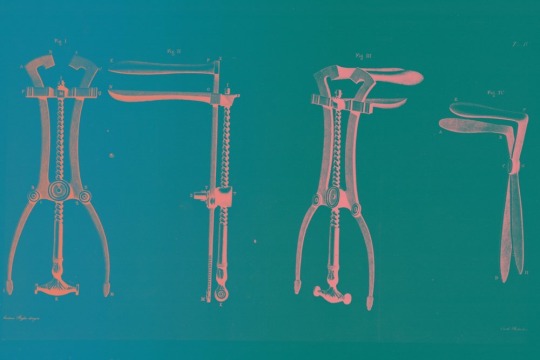
1847 Specula. Source image: National Library of Medicine.
Many iterations came before and have gone since, but the most controversial version of the speculum started out, in 1845, as a bent spoon. That was when an Alabama-based doctor named James Marion Sims set out to treat an agonizing medical condition, and in the process established precedent for the practice of modern gynecology—in more ways than one.
Sims was attending to a patient who had been thrown off of her horse, and in landing on her pelvis, developed uterine retroversion (a tipping, or tilting backward, of the uterus). In the process of attending to her, Sims was struck by the insight that a custom-fashioned tool would allow him to see better into the vaginal canal. His first foray into speculum design was a doubly bent spoon that allowed him to separate and hold apart the vaginal walls. “Introducing the bent handle of the spoon I saw everything, as no man had ever seen before,” Sims later wrote in his unfinished memoir, The Story of My Life. “I felt I was on the eve of one of the great discoveries of the day.” Sims’s first experiments with that speculum were all done on enslaved women.

An Engraving Demonstrating the Sims Speculum (Bracket-Shaped Metal Instrument). Wikimedia Commons.
He ran a small private hospital—a “Surgical Infirmary for Negroes,” read an 1852 ad in Montgomery’s Weekly Advertiser, where he was “enabled to offer his professional services to his friends.” “It's really impossible to talk about the beginning of gynecology in America without talking about slavery because they were so deeply entwined and dependent on each other,” says Rachel Gross, science journalist and the author of Vagina Obscura: An Anatomical Voyage. Sims himself had slaves, and, Gross adds, “worked with other slaveholders to experiment on enslaved women in order to develop techniques that would help them continue to give birth, and continue to work.”
Sims used his new speculum to perform surgery on vesicovaginal fistulas, abscesses that often developed during difficult births, where the pressure of labor damaged tissue between the vagina and bladder or rectum. His surgeries on enslaved women were conducted without the use of anesthesia. Sims noted in his memoir that he operated on one woman, named only as Anarcha, 30 times.
He was lauded for his work, becoming the president of the American Medical Association in 1876 and then the founder and president of the American Gynecological Association. In a tribute written after Sims’s death, the American doctor W.O. Baldwin breathlessly wrote that the eponymous Sims speculum “has been to diseases of the womb what the printing press is to civilization, what the compass is to the mariner, what steam is to navigation, what the telescope is to astronomy.”
Baldwin’s encomium conveniently overlooked one historical aspect, however. “The speculum has been around for a really long time,” historian Deirdre Cooper Owens tells American Experience. “You can go to Ancient Greece, and Ancient Rome, the site of modern western medicine, and you'll find specula that existed.” What changed with the popularization of Sims’s design were the mores around gynecology. “Most men did not perform vaginal examinations, or pelvic examinations on their female patients because of the gender ideals of the time,” says Dr. Cooper Owens. “Now, these things become a bit more nuanced when we’re talking about enslaved people, or poor people, or people who were institutionalized in asylums. They tended to be the ones that were exploited, as doctors experimented and used their bodies literally as canvases to learn from. That kind of paints the picture of American medicine that we know today.”
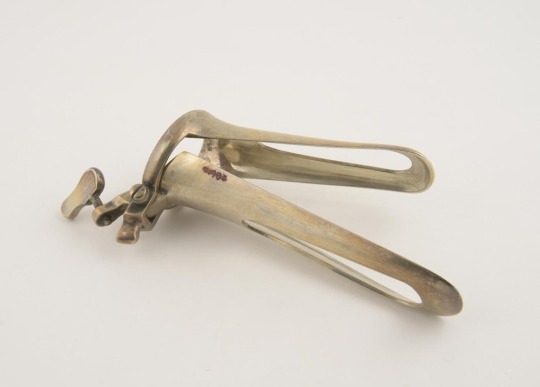
The 19th-Century Metal Cusco Vaginal Speculum Still Closely Resembles the Design of Most Specula Used Today. Science Museum Group, C. Firmin Cuthbert Collection.
As for the speculum itself, others refined Sims’s design in the decades that followed. In 1870, Edward Gabriel Cusco introduced a two-bladed instrument that featured a screw mechanism to hold the blades open inside the vaginal canal. Cusco’s bivalve construction was further iterated upon by T.W. Graves, a Massachusetts-based doctor. It was Graves’s duckbilled speculum—which combined elements of Sims’s curved design and Cusco’s double-bladed device—that eventually became most popular within the medical establishment.
Then a century after Sims’s crudely fashioned cutlery, the speculum came to play a central role in the battle against cervical cancer, at the time the deadliest form of cancer for women. Dr. George Papanicolaou conceived of taking a swab of cells from the cervix for examination under a microscope; the speculum made it possible for physicians to gather the cervical tissue from patients. Thus was the pap smear born, drastically diminishing the numbers of casualties as a result of cervical cancer.
However, today the incidence of advanced-stage cervical cancer is on the rise again, in part because fewer women are getting pap smears as a preventative measure. According to the National Institutes of Health, the percentage of women overdue for cervical cancer screening went from 14% in 2005 to 23% in 2019. Some of that reticence, perhaps, has to do with the long reach of Sims’s paternalistic legacy. “A pap smear is not done in a neutral environment,” Gross asserts. “When you enter an office with a doctor, a very real power dynamic becomes established where you feel like there is sort of an authority of your body.”

Vaginal Specula Today Tend to be Single-Use Plastic. Image by Whispyhistory, Wikimedia Commons.
The burgeoning “femtech” industry (a term coined in 2013 to describe technology geared toward female biology) aims to change that by making the experience of cervical cancer screenings feel less invasive—and that includes reimagining the speculum. But updating a 150-year-old design is only part of a larger picture. “People have really bad experiences getting pelvic exams and pap smears where they feel their body was violated, they weren't treated with respect or dignity,” says Gross. “That's not quite a problem with the tool, itself. That’s a problem with the culture of medicine, and the place of healthcare in our society, and how we communicate to women what this is for and what they’re allowed to know about their own bodies.”
— A Vaginal Speculum is a medical device that allows physicians and health providers to better view a woman’s cervix and vagina during pelvic exams. Most specula are made of metal and plastic, and physicians insert a portion of the speculum into the patient’s vagina to separate the vaginal walls.
1 note
·
View note
Text
Let the trumpets play that Mouret theme song — we’re rounding up the 15 best Masterpiece series from the half-century-plus history of the PBS drama anthology.
Masterpiece was previously titled Masterpiece Theatre, and as you might deduce from that spelling, the franchise specializes in British imports — usually costume dramas and period mysteries, with contemporary stories thrown in occasionally for good measure.
Of the Masterpiece productions with more than 10,000 user votes on IMDb, here are the top 15, ranked by average user rating.
15
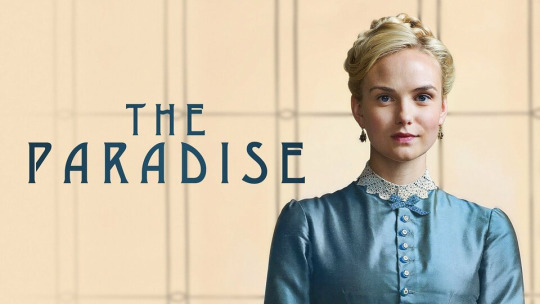
2012–2013
Based on Au Bonheur des Dames by Émile Zola, this series stars Joanna Vanderham as a small-town woman who gets a job at the first English department store in 1875 and falls for its dashing owner. “Witty, moving, adorable, suspenseful, intriguing, and the list goes on,” one viewer said on IMDb. “Hats off — pun intended.”
14
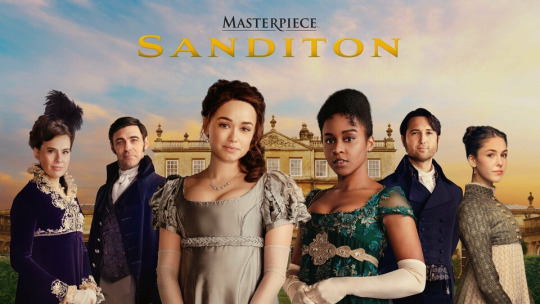
2019–2023
An unfinished Jane Austen manuscript inspired this series about a young woman (played by Rose Williams) who moves to a fishing town that aspires to become a seaside resort. “Yet again the Brits prove that nobody can do a period piece like they can!” one fan raved. “They always have the right balance of love, drama, relatable emotion, scandal, heartbreak, etc.”
13

2014–2023
A series of clergymen (played by James Norton, Tom Brittney, and — soon — Rishi Nair) investigate local crimes with the help of a detective inspector (played by Robson Green) in the titular Cambridgeshire village in this series. “I came to Grantchester after a few seasons of Father Brown,” said one IMDb user. “While another ‘priest plus cop’ series seemed redundant, Grantchester is brilliantly written and acted.”
12
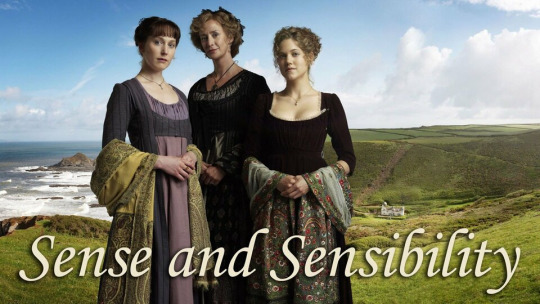
2008
In this adaptation of the classic Austen story — a more overtly sexual one than others, according to screenwriter Andrew Davies — then-newcomers Hattie Morahan and Charity Wakefield played polar-opposite sisters at the start of their 19th-century romantic journeys. “This serial … is my favorite rendition of its novel,” one viewer wrote. “In the first hour, it’s my favorite by far.”
11

2009
Romola Garai, Jonny Lee Miller, and the late Michael Gambon starred in this Austen adaptation, with Garai playing the meddlesome would-be matchmaker (and earning a Golden Globe nomination for her performance). “Everything — the acting, the costumes, storyline, and music — was just so superbly done,” an IMDb user enthused. “This version of Emma far surpasses its predecessors.”
10

2015
Mark Rylance, Damian Lewis, and Claire Foy brought Hilary Mantel’s historical novel to life, with Rylance portraying Thomas Cromwell as the lawyer becomes a close advisor to Henry VIII (Lewis) amid the king’s relationship with Anne Boleyn (Foy). “Mark Rylance was just mesmerizing,” one viewer said. “From the moment he appeared, he held me in thrall.”
9

2016–2019
Jenna Coleman portrayed a young Queen Victoria in this series that tracked the monarch’s ascension to the throne and her marriage to Prince Albert (Tom Hughes). “This has been the most amazing series since Downton Abbey I have watched,” an IMDb user wrote. “I laughed, I cried, I got angry. I felt every emotion humanly possible through watching it.”
8

2016–2019
Simply titled The Durrells across the pond, this comedy-drama follows a widow and her four children as they adapt to life on a Greek isle, taking inspiration from the memoirs of real-life British naturalist Gerard Durrell. “Overall it is just charming, crammed full of dry wit, and a bit of a page-turner, as I can’t wait for the next episode,” one fan opined.
7

2005
Twenty years after giving Masterpiece one Bleak House adaptation, the BBC sent over another, written by Davies, with Gillian Anderson and Carey Mulligan in the cast of a Charles Dickens tale that the network deemed a “passionate indictment” of England’s 19th-century legal system. “450+ minutes of a film is a long time to have your breath taken away,” a viewer said, “but that’s what happened when I first watched this magnificent adaptation.”
6
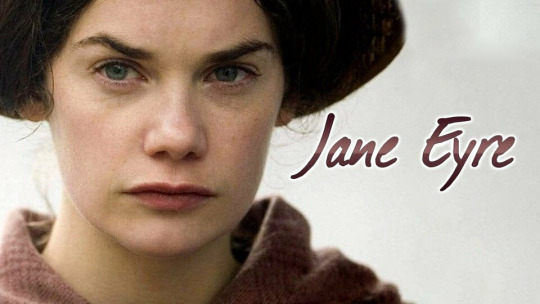
2006
Before screenwriter Sandy Welch adapted the aforementioned Emma for the BBC, she brought this Charlotte Brontë story to the network, with Ruth Wilson making a breakout turn as the titular governess with a troublesome past. “A lavish production in all the right ways — script, cast, direction, location, details — this is a perfect literary adaptation,” one IMDb user rhapsodized.
5
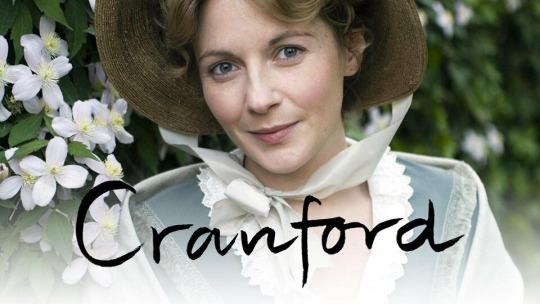
2007–2009
Judi Dench, Imelda Staunton, and an Emmy-winning Eileen Atkins played village women living on the verge of the Industrial Revolution in this five-part series based on Elizabeth Gaskell novellas. “Not a dry eye in the house as this came to a close last night,” one viewer said. “Absolute perfection.”
4
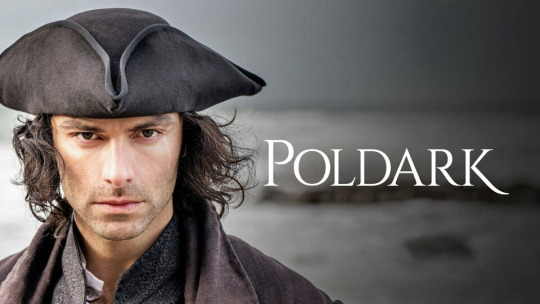
2015–2019
Aidan Turner gained fans on both sides of the Atlantic with this series about a British Army officer returning to Cornwall after the American Revolution and finding his family home nothing like how he left it. “I use IMDb all the time to look at reviews, but I never leave them,” one user wrote. “I signed up for an account just so I could rate this series because it is that awesome.”
3

2010–2015
A Masterpiece series so popular it inspired two big-screen movies, this upstairs-downstairs drama followed the aristocratic Crawley family and their staff as they navigate the turbulent early 20th century. “Downton Abbey is the embodiment of excellence,” a fan said. “Well written with intelligent and inspiring storylines.”
2
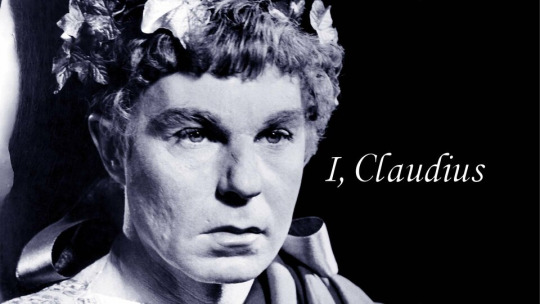
1976
Based on the Robert Graves novel of the same name and its sequel, this miniseries chronicled the early Roman Empire through decades of Claudius’ reign. Derek Jacobi starred as the title emperor, and the supporting cast included a still-up-and-coming Patrick Stewart. “I, Claudius is the ultimate soap opera — vicious, cruel, manipulative — and this famous English miniseries grabs the attention and holds fast throughout the entire length of its complex tale of ancient intrigue,” one viewer said.
1
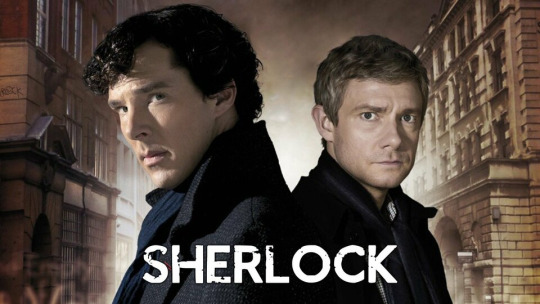
2010–2017
A modern-day take on the Arthur Conan Doyle’s famous detective, Sherlock stars Benedict Cumberbatch as the title character and Martin Freeman as sidekick Watson, with Andrew Scott stealing scenes as the archenemy Moriarty. “[This] will have Conan Doyle spinning in his grave… with delight,” one fan said. “A brilliantly written, well-acted program. Well done to all concerned.”
#pbs#the paradise#sense and sensibility#downton abbey#wolf hall#victoria#sherlock#poldark#sanditon#cranford#grantchester#emma#bleak house#i claudius
4 notes
·
View notes
Text
Mary Wollstonecraft Biography, Wiki, Age, Height, Weight, Family

Mary Wollstonecraft Biography: Mary Wollstonecraft (1759-1797) was a British writer, philosopher, and advocate for women's rights. Although her unconventional personal relationships received more attention than her writing during her lifetime, today, Wollstonecraft is recognized as a founding feminist philosopher. Her life and works are often cited as influential in the feminist movement. Mary Wollstonecraft Biography. Wollstonecraft wrote novels, treatizes, a travel narrative, a history of the French Revolution, a conduct book, and a children's book in her brief career. She is best known for her book A Vindication of the Rights of Woman (1792), in which she argues that women are not naturally inferior to men but only appear to be so because of their lack of education. She envisions a social order founded on reason where men and women are treated as rational beings. Mary Wollstonecraft Biography. Mary Wollstonecraft Biography After Wollstonecraft's death, her widower published a Memoir (1798) of her life, which revealed her unconventional lifestyle and damaged her reputation for nearly a century. However, with the rise of the feminist movement in the twentieth century, Wollstonecraft's advocacy for women's equality and her critiques of conventional femininity became increasingly important. Wollstonecraft had two ill-fated affairs, with Henry Fuseli and Gilbert Imlay (with whom she had a daughter, Fanny Imlay), before marrying the philosopher William Godwin, a forefather of the anarchist movement. She died at the age of 38, leaving behind several unfinished manuscripts. Her second daughter, Mary Shelley, was born eleven days after her death. Shelley would become an accomplished writer and the author of Frankenstein.

Mary Wollstonecraft Biography
Mary Wollstonecraft Biography
Date of birthApril 27, 1759BirthplaceSpitalfields, LondonParentsElizabeth Dixon and Edward John WollstonecraftNumber of siblings7Family's financial situationBecame financially unstable due to father's speculative projectsWollstonecraft's inheritanceFather compelled her to turn it over to himFather's behaviourViolent, he would beat his wife in drunken ragesWollstonecraft's role in the familyA maternal role for sisters, Everina and ElizaWollstonecraft's actions for ElizaPersuaded her to leave her husband and infant due to postpartum depressionFirst important friendshipJane ArdenIntellectual atmosphereIn Arden householdEmotional possessivenessExpressed towards ArdenSecond important friendshipFanny (Frances) BloodWollstonecraft's jobLady's companion to Sarah Dawson in BathWollstonecraft's return homeTo care for her dying motherWollstonecraft's living situation after her mother's deathMoved in with the BloodsWollstonecraft's dream with BloodTo live in a female utopiaThe school set up by Wollstonecraft, her sisters, and BloodIn Newington Green, a Dissenting communityBlood's marriage and moveTo Lisbon, Portugal, with her husband, Hugh SkeysBlood's healthIt became worse when pregnant, despite the moveWollstonecraft's departure from schoolTo nurse BloodBlood's deathDevastated Wollstonecraft YearEvent1785Blood dies; Wollstonecraft becomes governess to the Kingsborough family in Ireland1788Wollstonecraft publishes Original Stories from Real Life1787Wollstonecraft decides to pursue a career as an author1790Wollstonecraft publishes A Vindication of the Rights of Men1792Wollstonecraft publishes A Vindication of the Rights of Woman; Talleyrand-Périgord visits Wollstonecraft, and she advocates for girls' education in France. Wollstonecraft's relationship with Henry Fuseli ends; she travels to France. DateEventDecember 1792Wollstonecraft left for Paris.January 1793Wollstonecraft arrived in Paris.February 1793France declared war on Britain.March 1793The Committee of Public Safety came to power.April 1793All foreigners were forbidden to leave France.October 16, 1793Marie Antoinette was guillotined.October 31, 1793Most of the Girondin leaders were guillotined. Disclaimer: The above information is for general informational purposes only. All information on the Site is provided in good faith. However, we make no representation or warranty of any kind, express or implied, regarding the accuracy, adequacy, validity, reliability, availability, or completeness of any information on the Site. Read the full article
0 notes
Photo

Book Reviews : An Unfinished Woman by Lillian Hellman
This is a memoir about a strong. smart and witty woman. I loved hearing stories about her travels and the company of writers that she was friends with.
#chrissybooksandberries#book reviews#an unfinished woman#lillian hellman#nonfiction november#november#nonfiction#memoir#Autobiography#playwright#booklr#booker#bookblr#book blog#bookish#bookworm#book addict#book nerd#book lion#book dragon#bookstagram#book photo#book photography
44 notes
·
View notes
Photo

Mary Wollstonecraft (27 April 1759 – 10 September 1797) was an English writer, philosopher, and advocate of women's rights. Until the late 20th century, Wollstonecraft's life, which encompassed several unconventional personal relationships at the time, received more attention than her writing. Today Wollstonecraft is regarded as one of the founding feminist philosophers, and feminists often cite both her life and her works as important influences.
During her brief career, she wrote novels, treatises, a travel narrative, a history of the French Revolution, a conduct book, and a children's book. Wollstonecraft is best known for A Vindication of the Rights of Woman (1792), in which she argues that women are not naturally inferior to men, but appear to be only because they lack education. She suggests that both men and women should be treated as rational beings and imagines a social order founded on reason.
After Wollstonecraft's death, her widower published a Memoir (1798) of her life, revealing her unorthodox lifestyle, which inadvertently destroyed her reputation for almost a century. However, with the emergence of the feminist movement at the turn of the twentieth century, Wollstonecraft's advocacy of women's equality and critiques of conventional femininity became increasingly important.
After two ill-fated affairs, with Henry Fuseli and Gilbert Imlay (by whom she had a daughter, Fanny Imlay), Wollstonecraft married the philosopher William Godwin, one of the forefathers of the anarchist movement. Wollstonecraft died at the age of 38 leaving behind several unfinished manuscripts. She died 11 days after giving birth to her second daughter, Mary Shelley, who would become an accomplished writer and author of Frankenstein.
#Mary Wollstonecraft#women in history#women's rights#feminist#feminism#XVIII century#people#portrait#paintings#art#arte
119 notes
·
View notes
Photo

“Ivy Nicholson was a working-class girl from New York City who lit up the 1950s as one of Europe’s top fashion models, married a French count, posed topless for Salvador Dali and became one of the first “superstars” in Andy Warhol’s Factory. It was a flashbulb life built on bravado and sheer magnetism. But it was not a solid life, and when the 1960s ended and the big checks stopped coming, she was left on her own. She spent her last decades in or near poverty, sometimes homeless, telling anyone who would listen that she was on her way back up.”
The New York Times obituary for erstwhile fashion model and Warhol Superstar Ivy Nicholson (née Irene Nicholson, 22 February 1933 - 25 October 2021) – who has died aged 88 – is compulsory reading! My highlights from her fabulous, messy life:
“In her 20s Ms Nicholson appeared on the covers of Vogue, Elle, Cosmopolitan, Bazaar and other magazines. She built a reputation: fearlessly inventing characters and looks for her shoots, but often arriving hours late to the studio and refusing to pose until someone brought foie gras or met some other demand.”
“When Howard Hawks flew her to Egypt in 1954 for a role in his epic movie Land of the Pharaohs, she objected to the studio’s multiyear contract. So, as she later told the story, she bit one of the actors to get out of the deal. Her replacement was Joan Collins.”
“She went on to get small parts in Italian movies and by her account became obsessed with the actor Anthony Perkins. When he did not return her affections, she later said, she slit her wrists. The suicide attempt cost her a role in Federico Fellini’s “8½,” according to her unfinished memoir.”
Reading it, I was struck by Nicholson’s parallels with her fellow Warhol superstar Nico (another international supermodel in the fifties who actually DID appear in a Fellini film) and Maila Nurmi (aka Vampira), who also heedlessly squandered opportunities and burnt bridges in her prime and later lived in poverty. (Nurmi also romantically pursued Tony Perkins!).
As a frequently homeless older woman, Nicholson maintained her sense of style and looked strikingly ravaged and wraith-like (like Nico, Chet Baker or Anita Pallenberg she exuded ruined glamour). It sounds like she lived on her own terms and remained a free spirit until the end. What a woman!
28 notes
·
View notes